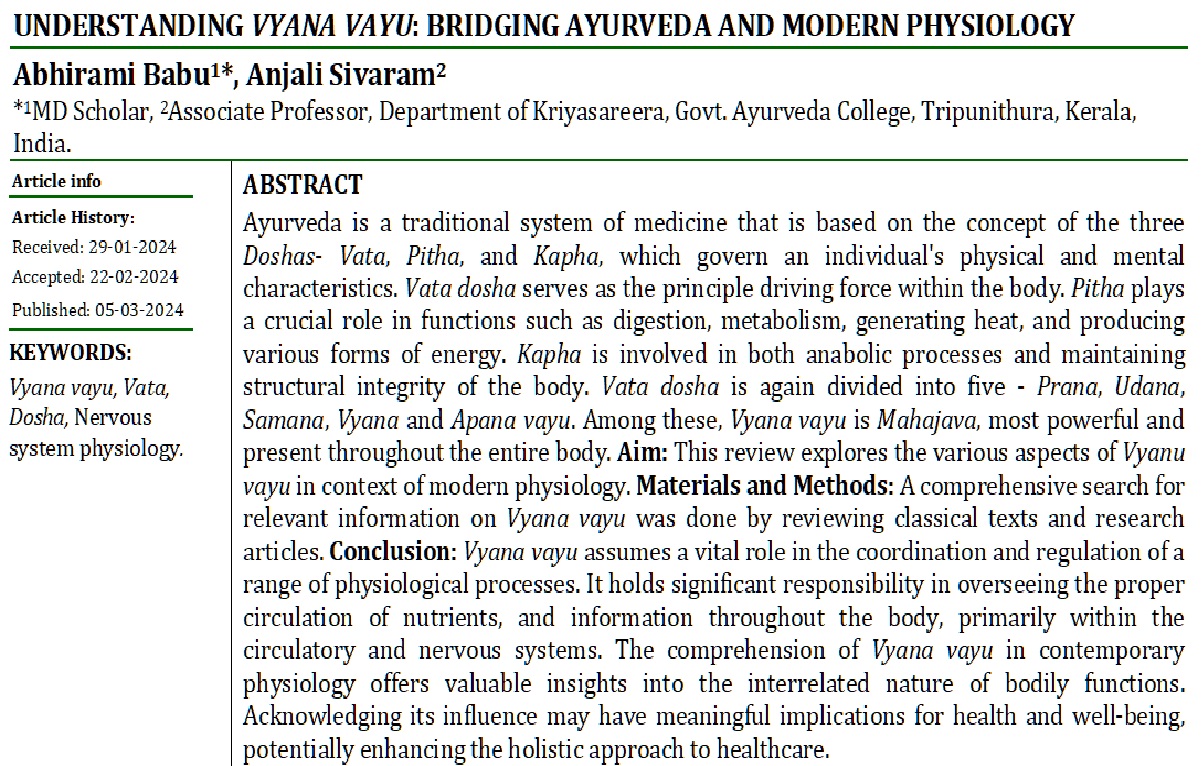Understanding Vyana Vayu: Bridging Ayurveda and Modern Physiology
Abstract
Background: Ayurveda is a traditional system of medicine that is based on the concept of the three doshas - Vata, Pitha, and Kapha, which govern an individual's physical and mental characteristics. Vata dosha serves as the principle driving force within the body. Pitha plays a crucial role in functions such as digestion, metabolism, generating heat, and producing various forms of energy. Kapha is involved in both anabolic processes and maintaining structural integrity of the body. Vata dosha is again divided in to five – prana, udana, samana, vyana and apana vayu. Among these, vyana vayu is mahajava, most powerful and present throughout the entire body. Aim: This review explores the various aspects of vyanu vayu in context of modern physiology. Materials and methods: A comprehensive search for relevant information on Vyana vayu was done by reviewing classical texts and research articles. Conclusion: Vyana vayu assumes a vital role in the coordination and regulation of a range of physiological processes. It holds significant responsibility in overseeing the proper circulation of nutrients, and information throughout the body, primarily within the circulatory and nervous systems. The comprehension of Vyana vayu in contemporary physiology offers valuable insights into the interrelated nature of bodily functions. Acknowledging its influence may have meaningful implications for health and well-being, potentially enhancing the holistic approach to healthcare.
Downloads

Copyright (c) 2024 International Journal of Ayurveda and Pharma Research

This work is licensed under a Creative Commons Attribution-NonCommercial-ShareAlike 4.0 International License.






